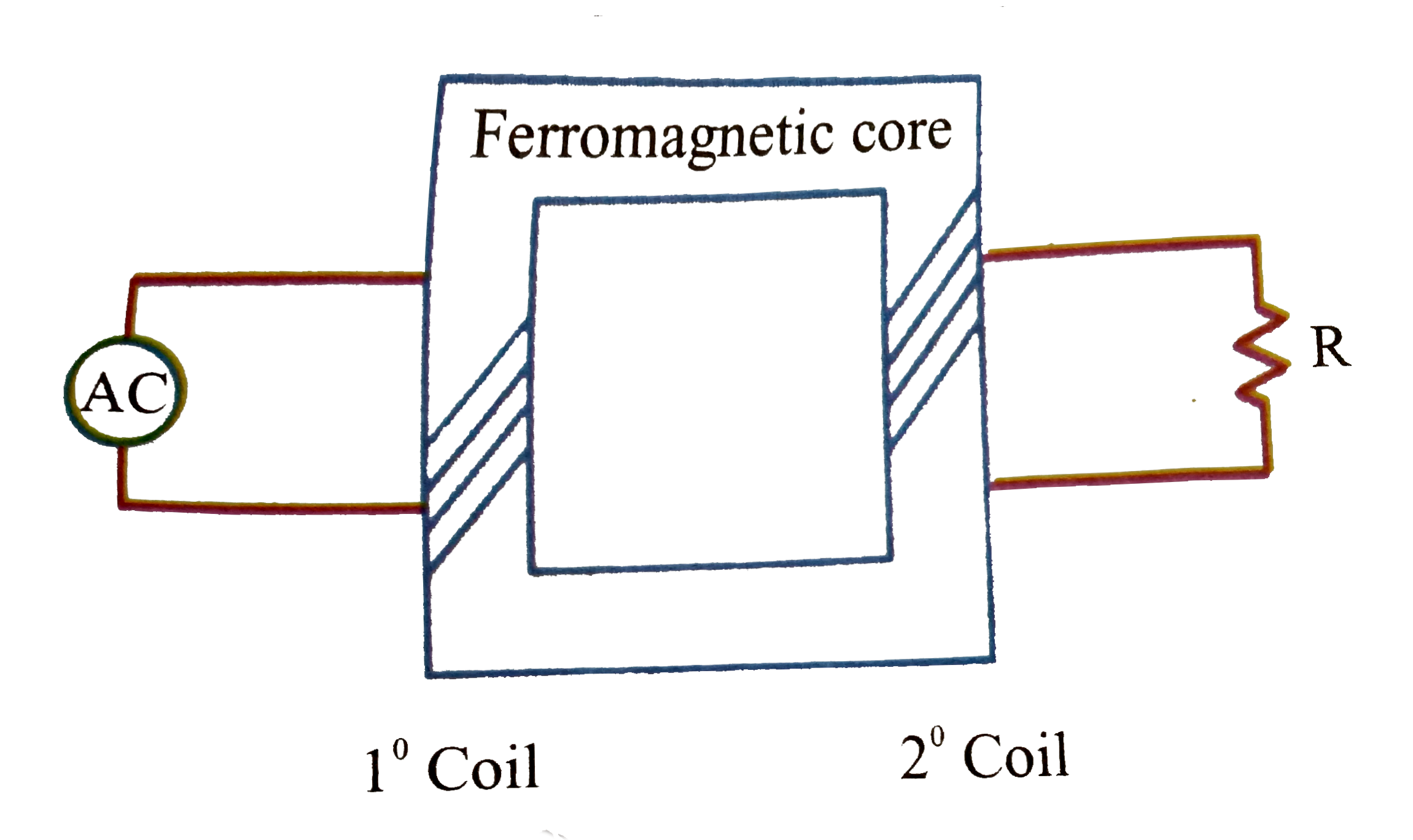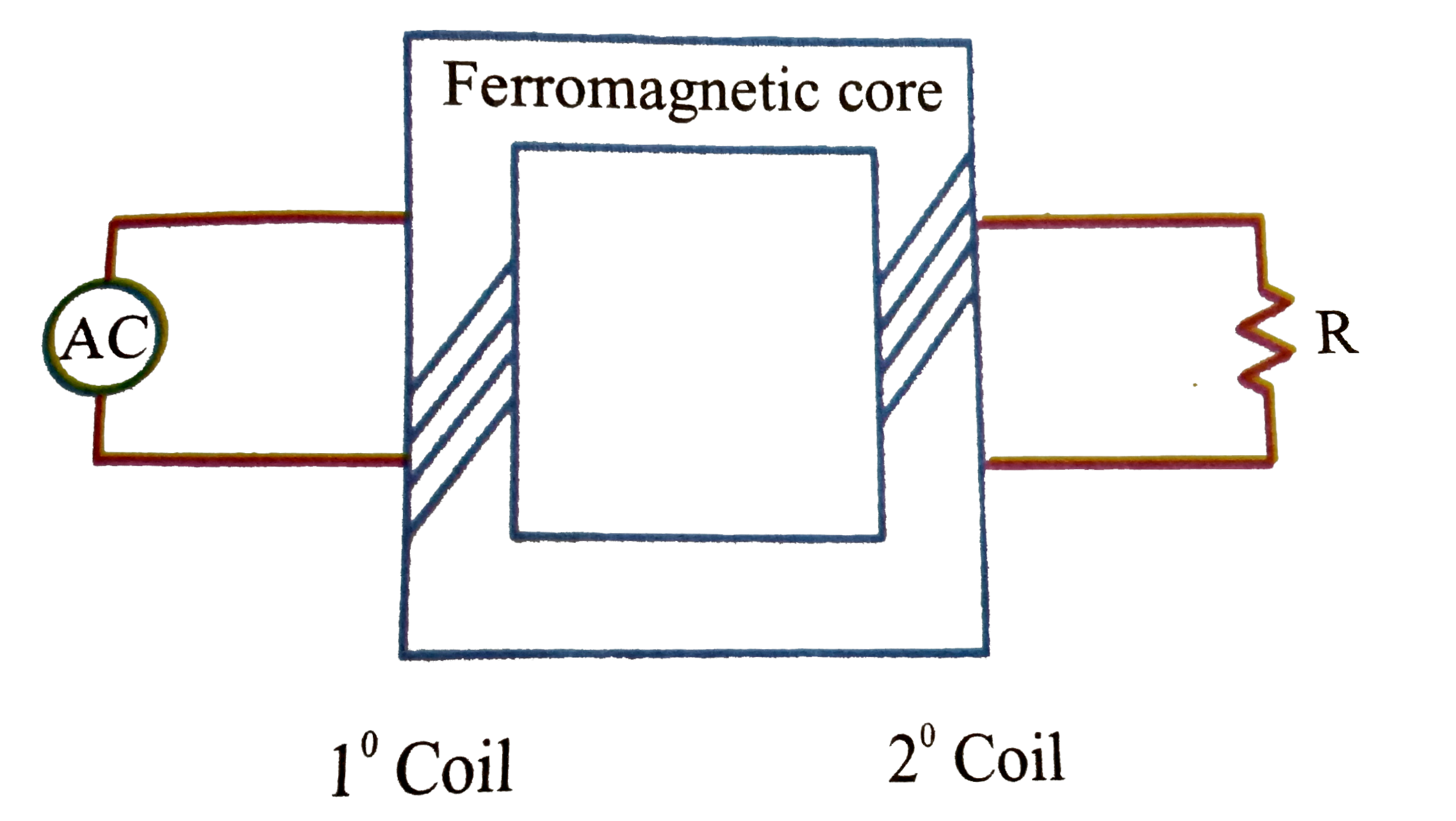The coils, in certain galvanometers, have a fixed core made of a non-magnetic metallic material. Why does the oscillatory coil come to rest so quickly in such a core ?
The correct Answer is:On account of eddy currents set up in the metallic core, when the galvanometer coil oscillates in a magnetic field.
Topper's Solved these Questions
- ELECTROMAGNETICE INDUCTIONBOOK - U-LIKE SERIESCHAPTER - ELECTROMAGNETICE INDUCTIONEXERCISE - Short Answer Questions
38 Videos
- ELECTROMAGNETICE INDUCTIONBOOK - U-LIKE SERIESCHAPTER - ELECTROMAGNETICE INDUCTIONEXERCISE - Long Answer Questions -I
16 Videos
- ELECTROMAGNETICE INDUCTIONBOOK - U-LIKE SERIESCHAPTER - ELECTROMAGNETICE INDUCTIONEXERCISE - Assertion -Reason Type Questions
5 Videos
- ELECTROMAGNETIC WAVESBOOK - U-LIKE SERIESCHAPTER - ELECTROMAGNETIC WAVESEXERCISE - SELF ASSESSMENT TEST (SECTION C)
1 Videos
- ELECTROSTATIC POTENTIAL AND CAPACITANCE BOOK - U-LIKE SERIESCHAPTER - ELECTROSTATIC POTENTIAL AND CAPACITANCE EXERCISE - SELF ASSESSMENT TEST
1 Videos
Similar Questions
Knowledge Check
A physics lab is designed to study the transfer of electrial energy from one circuit to another by means of a magnetic field using simple transformers. Each transformer has two coils of wire electrically insulated from each other but wound a round a common core of ferromagnetic material. The two wires are close together but do not touch each other
The primary (1∘) coil is connected to a source of alternating (AC) current. The secondary (2∘) coil is connected to resistor such as a light bulb. The AC source produces on oscillating voltage and current in the primary coil that produces an oscillating megnetic field in the core. material. This in turn induces an oscillating voltage and AC curent in the secondary coil
Students collected the following data comparing the number of turns per coil (N), the voltage (V) and the current (I) in the coils of three transformers.
∣∣ ∣ ∣ ∣∣Transformerprimary coilSecondary coil1100.10V.10A200.20V.5A2100.10V.10A50.5V.5A3100.10V.10A100.5V.20A∣∣ ∣ ∣ ∣∣

A trasnsformer with 40 turns in its primary coil is connected to a 120VAC source. If 20W of power if supplied to the primary coil, how much power is developed in the secondary coil ?A10WB20WC80WD160WA physics lab is designed to study the transfer of electrial energy from one circuit to another by means of a magnetic field using simple transformers. Each transformer has two coils of wire electrically insulated from each other but wound a round a common core of ferromagnetic material. The two wires are close together but do not touch each other
The primary (1∘) coil is connected to a source of alternating (AC) current. The secondary (2∘) coil is connected to resistor such as a light bulb. The AC source produces on oscillating voltage and current in the primary coil that produces an oscillating megnetic field in the core. material. This in turn induces an oscillating voltage and AC curent in the secondary coil
Students collected the following data comparing the number of turns per coil (N), the voltage (V) and the current (I) in the coils of three transformers.
∣∣ ∣ ∣ ∣∣Transformerprimary coilSecondary coil1100.10V.10A200.20V.5A2100.10V.10A50.5V.5A3100.10V.10A100.5V.20A∣∣ ∣ ∣ ∣∣

The primary coil of a transformer has 100 tunrs and is connected to a 120VAC source. How many turns are in the secondary coil if there is 2400V across itA5B50C200D2000A physics lab is designed to study the transfer of electrial energy from one circuit to another by means of a magnetic field using simple transformers. Each transformer has two coils of wire electrically insulated from each other but wound a round a common core of ferromagnetic material. The two wires are close together but do not touch each other
The primary (1∘) coil is connected to a source of alternating (AC) current. The secondary (2∘) coil is connected to resistor such as a light bulb. The AC source produces on oscillating voltage and current in the primary coil that produces an oscillating megnetic field in the core. material. This in turn induces an oscillating voltage and AC curent in the secondary coil
Students collected the following data comparing the number of turns per coil (N), the voltage (V) and the current (I) in the coils of three transformers.
∣∣ ∣ ∣ ∣∣Transformerprimary coilSecondary coil1100.10V.10A200.20V.5A2100.10V.10A50.5V.5A3100.10V.10A100.5V.20A∣∣ ∣ ∣ ∣∣

A 12V battery is used to supply 2.0mA of current to the 300 turns in the primary coil of a given transformer. What is the current in the secondary coil if N2=150 turns.AzeroB1.0mAC2.0mAD4.0mA
The core of a transformer is made of magnetic material of high permeanbility. Why ?
View SolutionWhat would be the energy of the magnetic field of the coil of the previous problem, if its core were of a nonferromagnetic material? What is the source of oxcess energy in the case of a ferromagnetic core?
View SolutionWhat would be the energy of the magnetic field of the coil of the previous problem, if its core were of a nonferromagnetic material? What is the source of oxcess energy in the case of a ferromagnetic core?
View SolutionThe core of a transformer is made of a material having norrow hysterisis loop. Why ?
View SolutionA physics lab is designed to study the transfer of electrial energy from one circuit to another by means of a magnetic field using simple transformers. Each transformer has two coils of wire electrically insulated from each other but wound a round a common core of ferromagnetic material. The two wires are close together but do not touch each other
The primary (1∘) coil is connected to a source of alternating (AC) current. The secondary (2∘) coil is connected to resistor such as a light bulb. The AC source produces on oscillating voltage and current in the primary coil that produces an oscillating megnetic field in the core. material. This in turn induces an oscillating voltage and AC curent in the secondary coil
Students collected the following data comparing the number of turns per coil (N), the voltage (V) and the current (I) in the coils of three transformers.
∣∣ ∣ ∣ ∣∣Transformerprimary coilSecondary coil1100.10V.10A200.20V.5A2100.10V.10A50.5V.5A3100.10V.10A100.5V.20A∣∣ ∣ ∣ ∣∣

Which of the following is a correct expression for R, the resistance of the load connected to the secondary coil
View Solution
